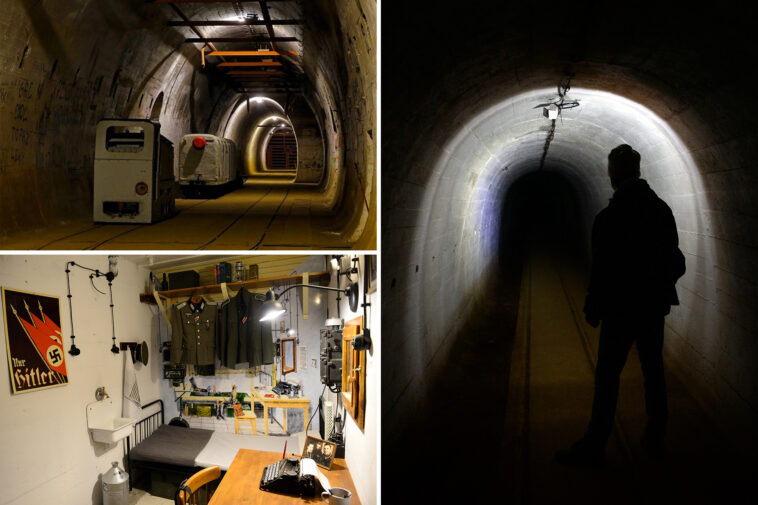A nearly 20-mile underground relic of Nazi tunnels, shafts, underground railway stations and combat facilities in Poland can now be toured after being transformed into an army museum.
The subterranean city, called Festungsfront Oder-Warthe-Bogen, or the Ostwall, located in the serene countryside around the small Polish village of Pniewo, was abandoned in 1945.
It is now a dark tourism destination, with 19 miles of eerie tunnels open for people to explore in the Międzyrzecz Fortified Region Museum.
“The Nazis planned this complex for long-term stay for soldiers, so everything is constructed to make it more habitable,” Mikolaj Wiktorowski, a guide at the museum, told CNN Travel.
The museum recreated the tunnels to show what life underground for members of the Third Reich looked like — with mannequins in uniform standing guard in administrative rooms, sleeping areas and bathrooms. The museum opened in 2011.
Construction on the Ostwall began before World War II as Adolf Hitler hoped to fortify Germany’s eastern frontier from Poland and the Soviet Union.
Originally, the plans were for it stretch 50 miles, with work on the ambitious project scheduled until 1951. However, by 1938, Germany refocused on France, and halted the Ostwall’s construction.
The following year, the invasion of Poland triggered World War II and the project was scrapped.
Although it was never completed, it is considered one the most advanced fortifications in the world, with its central section alone able to hold tens of thousands of soldiers.
Start your day with all you need to know
Morning Report delivers the latest news, videos, photos and more.
Thanks for signing up!
In the 1980s and ’90s, the tunnels became the site of raves and weddings hosted by the counter-cultural subculture the Bunker People, who left their mark there with graffiti that still covers its walls.
“The graffiti are the soul of this place,” Wiktorowski told the outlet.
“Without them, we would just have bare, lifeless walls.”






